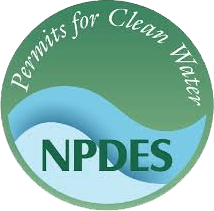The Butler County Storm Water District is committed to helping our citizens learn more about storm water management, water quality, and nonpoint source pollution. Click on one of the links below for web sites grouped by federal agencies, national watershed organizations, state, or local.
Federal Agencies | National Watershed Organizations | State | Local
Federal Agencies
As authorized by the Clean Water Act, the National Pollutant Discharge Elimination System (NPDES) permit program controls water pollution by regulating point sources that discharge pollutants into waters of the United States. Point sources are discrete conveyances such as pipes or man-made ditches. Individual homes that are connected to a municipal system, use a septic system, or do not have a surface discharge do not need an NPDES permit; however, industrial, municipal, and other facilities must obtain permits if their discharges go directly to surface waters.

NRCS puts nearly 70 years of experience to work in assisting owners of America’s private land with conserving their soil, water, and other natural resources. Local, state, and federal agencies and policymakers also rely on their expertise. NRCS provides technical assistance based on sound science and suited to a customer’s specific needs. Cost shares and financial incentives are available in some cases. Most work is done with local partners.

The U.S. Army Corps of Engineers provides vital services to the Army and the nation through developing, managing, protecting, and improving our nation’s water resources. They strive to bring synergy between development and environment, seeking the best economic, environmental, and social solutions.

USGS operates in every state. The Water Resources mission is to provide water information that benefits the Nation’s citizens: publications, data, maps, and applications software. The Water Resouces Discipline (WRD) actively promotes the use of this information by decision makers to minimize loss of life and property as a result of water-related natural hazards such as floods, droughts, and land movement; effectively manage ground-water and surface-water resources for domestic, agricultural, commercial, industrial, recreational, and ecological uses; and protect and enhance water resources for human health, aquatic health, and environmental quality.


The U.S. Geological Survey’s (USGS) Water Science for Schools web site offers information on many aspects of water, along with pictures, data, maps, and an interactive center where you can give opinions and test your water knowledge. Excellent site for the classroom.

WaterWatch — Current Ohio Stream Conditions
Map of real-time streamflow compared to historical streamflow for the day of the year (Ohio). The “real-time streamflow” map tracks short-term changes (over several hours) in rivers and streams. Although the general appearance of the map changes very little from one hour to the next, individual sites may change rapidly in response to major rain events or to reservoir releases.
National Water Quality Organizations

Project WET (Water Education for Teachers) is a nonprofit water education program and publisher for educators and young people ages 5-18. The program facilitates and promotes awareness, appreciation, knowledge, and stewardship of water resources through the dissemination of classroom-ready teaching aids and the establishment of internationally sponsored Project WET programs.
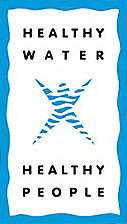
Healthy Water, Healthy People is an innovative water quality education program sponsored by Project WET and the Hach Scientific Foundation It offers hands-on activity guides, testing kits, training, and much more. Healthy Water, Healthy People is for anyone interested in learning and teaching about contemporary water quality education topics. Test your water quality knowledge by taking the Healthy Water, Healthy People Water Quality Quiz.

Founded in 1992, the Center for Watershed Protection is a non-profit 501c3 corporation that provides local governments, activists, and watershed organizations around the country with the technical tools for protecting some of the nation’s most precious natural resources: our streams, lakes, and rivers. The Center has developed and disseminated a multi-disciplinary strategy to watershed protection that encompasses watershed planning, watershed restoration, storm water management, watershed research, better site design, education and outreach, and watershed training.
State Links

The Ohio Stormwater Association is a group of public and private citizens dedicated to advancing the management of stormwater and related natural resources through education, leadership, watershed-based coordination and technical assistance in Ohio. The Association provides educational and networking opportunities for people focused on reducing the negative impacts of stormwater runoff. The Ohio Stormwater Association also hosts quarterly educational meetings on topics of interest to our members and helps to sponsor the Ohio Stormwater Conference being held each spring.
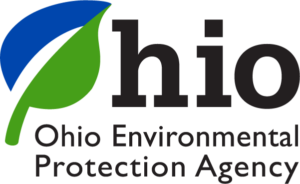
The Ohio EPA’s Division of Surface Water is responsible for restoring and maintaining the quality of Ohio’s rivers and streams. The goal of Ohio’s surface water program — restoration and maintenance of Ohio’s water resources — reflects the national water quality objective as contained in the Federal Clean Water Act (CWA).

The Ohio Department of Natural Resources (ODNR) Division of Water has broad responsibilities for managing Ohio’s surface and ground water resources. The Division collects hydrologic data; develops ground water resource and pollution potential maps; conducts water supply studies; issues permits for the construction of dams, dikes, and levees; inspects existing dams; operates the state canal systems; and administers the state floodplain management program. Technical assistance is also provided on ground water quantity management, water well construction, water-related engineering, and flooding and floodplain management. The Division offers a variety of educational programs to promote wise stewardship of Ohio’s water resource.

The Stream Restoration, Ecology, and Aquatic Management Solutions (STREAMS) Project is a multi-agency initiative whose goal is to provide education, information, technology and communication on stream management strategies.

The Ohio Watershed Network (OWN) provides information to community members and natural resources professionals who want to protect the resources in their watershed. They take a social science-based approach to guiding local organizations in developing and meeting goals.
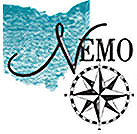
NEMO is a non-regulatory research-based educational program on natural resources based planning. It addresses nonpoint source pollution and its link to different land uses, particularly impervious surfaces and transport and concentration of pollutants in storm water.
Local Links
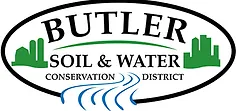
The Butler Soil and Water Conservation District (SWCD) was organized in May of 1942 by concerned landowners interested in protecting and improving the soil and water resources here in Butler County, Ohio. The District is a subdivision of the State of Ohio, and is assisted by the Butler County Commissioners, the Ohio Soil & Water Conservation Commission, and the Ohio Department of Natural Resources through the Division of Soil and Water Conservation. Technical assistance for conservation practices is provided without charge by the Butler SWCD through the United States Department of Agriculture’s Natural Conservation Service (NRCS) personnel.

The Hamilton to New Baltimore Groundwater Consortium consists of six public and industrial groundwater producers/users in southwest Ohio. Click on this site to learn more about their unique efforts to develop a joint Wellhead Protection Program, learn more about how groundwater can become contaminated, and what you can do to help protect your drinking water source.

The Miami Conservancy District (MCD) is a regional government agency that provides flood protection, water resource monitoring and information, and recreational opportunities for 1.5 million people in the Great Miami River watershed. Formed in 1915, the MCD continues to work toward the mission of protecting lives, property and economic vitality by providing unfailing flood protection, preserving water resources, enhancing river corridors and conserving valuable land within the Great Miami River watershed.
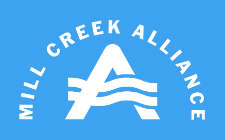
We champion the resurgence of the Mill Creek Watershed as a natural and community asset. We envision the watershed as a healthy ecosystem where people and communities can thrive. OUR WORK FOCUSES ON RESTORATION, EDUCATION, AND RECREATION.
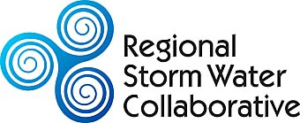
The Regional Storm Water Collaborative is composed of storm water districts, municipalities, and soil and water conservation districts in Southwest Ohio and Northern Kentucky. The purpose is to raise awareness about water quality issues throughout the Ohio River Valley in an effort to keep our waterways clean and healthy.
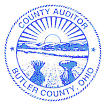
Butler County Auditor’s Public Access System — This site provides limited access to the property records, tax records and land information of Butler County, Ohio.
Federal Agencies | National Watershed Organizations | State | Local

